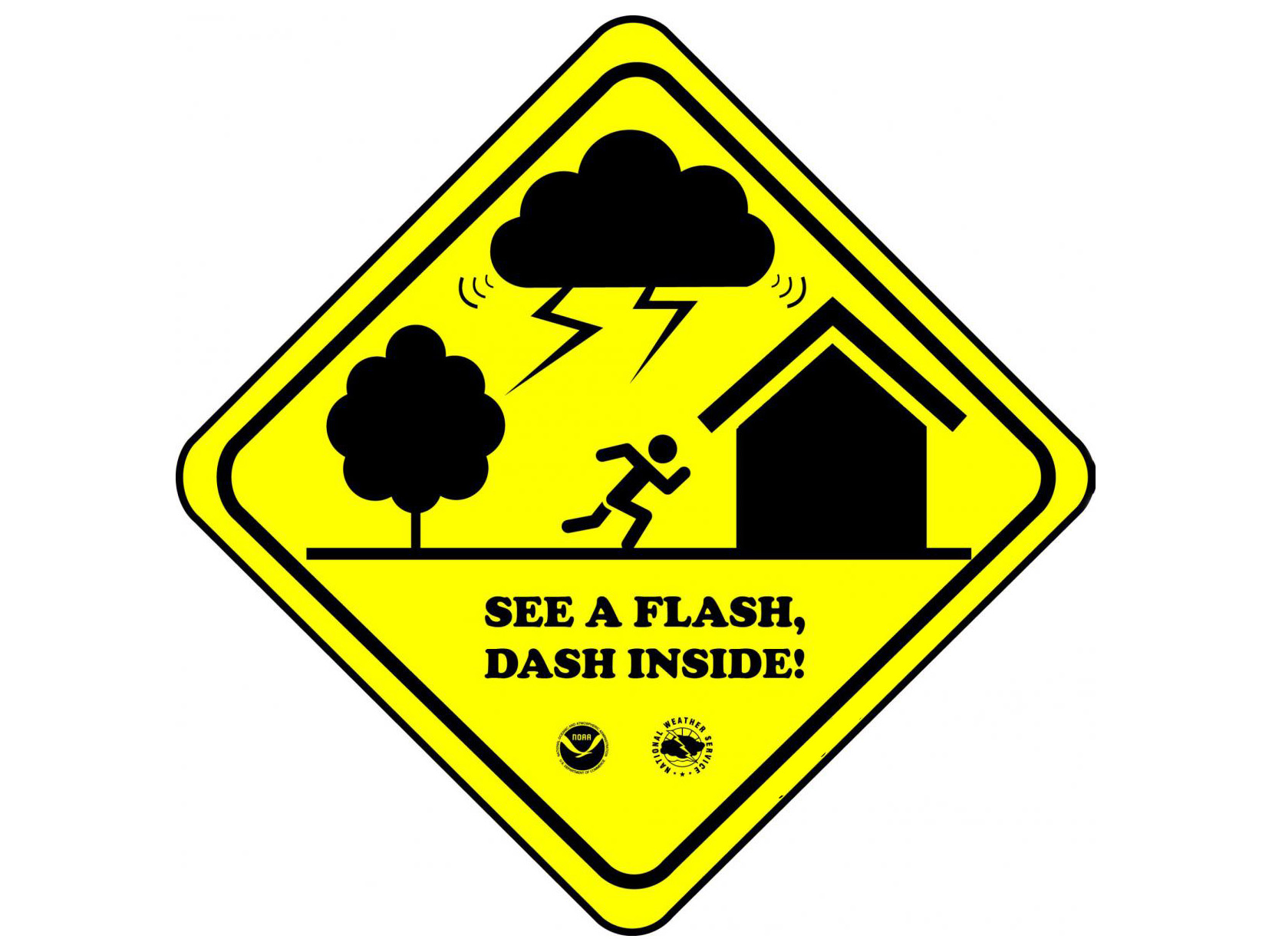
By Soni Cochran, Extension Associate, Lancaster County
Lightning is one of the leading causes of weather-related fatalities. In the U.S., floods are the only weather events causing more fatalities than lightning. The National Oceanic and Atmospheric Administration reports that each year hundreds of people are injured by lightning strikes.
Your odds of being struck by lightning in a given year are relatively low — only around 1 in 500,000. However, some factors can increase your odds.
Lightning most often strikes people who work outside or engage in outdoor recreational activities. According to the Centers for Disease Control and Prevention, more than one-third of lightning strike deaths occur on farms. Other common places where people are struck by lightning include industrial work sites and private homes.
Lightning can happen any time of year but July and August are months with the highest-recorded number of lightning strikes. Time of day is also a factor as two-thirds of all reported lightning casualties occurred between noon and 6 p.m.
It is important to pay attention to the weather forecast and be prepared in case conditions change. If you have a smart phone, sign up for weather alerts. Pay attention to early weather signs of potential lightning strikes like distant thunder. Be ready to stop all your outdoor activities if weather threatens and immediately seek safe shelter.
LIGHTNING: WHAT YOU NEED TO KNOW
• When thunderstorms are in the area, there is NO PLACE outside that is safe!
• If you hear thunder, lightning is close enough to strike you. Remember: “When thunder roars, go indoors!” If you are hard of hearing or know someone who is deaf, it is important to recognize a flash of lightning as your sign to go indoors!
• When you hear thunder or see a lightning flash, immediately move to a safe shelter like a substantial building or metal-topped vehicle.
• Shelter in place for at least 30 minutes AFTER you hear the last rumble of thunder.
Indoor lightning safety – 32% of lightning injuries occur indoors.
• Do not use your landline phone. Stay off computers and other electrical equipment — anything that puts you in direct contact with electricity.
• If you have time and it is safe to do so, unplug your electrical devices and appliances.
• Avoid plumbing. Don’t bathe, shower or wash dishes by hand.
• Stay away from windows and doors, and stay off porches.
• Do not lie on concrete floors and do not lean against concrete walls.
Last resort outdoor risk reduction tips — if you are caught outside with no safe shelter:
• Immediately get off elevated areas such as hills, mountain ridges or peaks.
• Never lie flat on the ground.
• Never shelter under an isolated tree.
• If you are camping in an open area, find safe shelter immediately. Tents offer NO protection!
• If you are in a group, spread out to avoid the current from a lightning strike traveling between members.
• Immediately get out of and away from ponds, lakes and other bodies of water.
• Stay away from objects which conduct electricity (barbed wire fences, power lines, windmills, etc.).
• Protect your pets. A dog house isn’t safe in a storm and pets should never be left outside on a chain.
MYTHS AND FACTS FROM THE NATIONAL WEATHER SERVICE
Myth: No rain? No clouds overhead? You are safe from lightning.
Fact: Lightning often strikes more than three miles from the center of a thunderstorm, far outside the rain or thunderstorm cloud. According to the National Weather Service, these “bolts from the blue” can strike 10–15 miles from the thunderstorm.
Myth: When you are in a car, the rubber tires protect you from lightning because they insulate you from the ground.
Fact: Most cars are safe from lightning, but it isn’t because of the rubber tires. You are protected because the car has a metal roof and metal sides. If lightning strikes a vehicle, it goes through the metal frame into the ground. This is one reason why you shouldn’t lean on the doors of your car during a thunderstorm. Convertibles, motorcycles, bicycles, cars with fiberglass shells and some outdoor recreational vehicles offer no protection from lightning.
Myth: If you touch someone who has been struck by lightning, you will be electrocuted.
Fact: It is safe to touch a lightning victim to give him/her first aid. The human body does not store electricity. Immediate medical attention, including calling 911, starting CPR and using an AED, may be critically important to keep the person alive until more advanced medical care arrives.
Myth: If you are in a house, you are 100% safe from lightning.
Fact: A house is a safe place to be during a thunderstorm as long as you avoid anything which conducts electricity.
Source: National Weather Service, Lightning Myths and Facts, http://www.weather.gov/safety/lightning-myths.
FOR MORE INFORMATION
Nebraska Extension’s Disaster Education website, https://disaster.unl.edu, has resources for:
• Families & individuals
• Homeowners
• Businesses & communities
• Agriculture